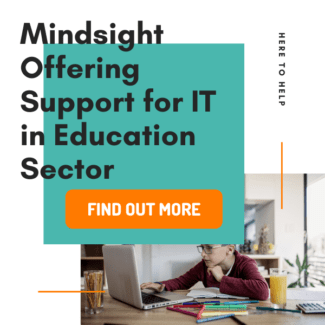March 31, 2020 by Siobhan Climer
As of March 27th, 48 states, excluding only Iowa and Maine, have issued state-wide school closures. The shutdown of schools across the U.S. due to the coronavirus outbreak leaves school districts scrambling to shift resources towards virtual learning for remote students.

While parents and alternative education programs have tried to pick up the slack, the potential longevity of shelter-in-place quarantine orders is forcing many schools to quickly perfect remote learning initiatives.
NPR called the current situation “the biggest distance-learning experiment in history”, and families, classroom teachers, nonprofit educators, school district officials, state and local government leaders, IT directors, and, of course, the students themselves are holding a collective breath to see how the remainder of the school year unfolds.
Challenges Surrounding Virtual Learning For Remote Students
The challenges are enormous. Questions of equity loom heavy, as schools reckon with students that lack internet connectivity. In some districts that have yet to approach a 1:1 policy, some students do not even have computer devices. While urban and suburban regions tend to have better access, a January 2020 report found that approximately 30% of rural Illinois residents lack internet speeds at 25 mbps and above.

The success of elearning and virtual learning initiatives also vary by age. Whereas secondary school students tend to have more discipline and capacity for virtual classrooms, younger students have more difficulty. Especially in the K-2 range, sitting still and attending to whole-class instruction – even when present in the classroom – can be a challenge.
That is why it’s vital everyone take a leading role in adjusting to the current parameters. For IT directors, this means supporting teachers, families, and students in accessing and using virtual learning resources.
Here are four key areas for IT directors to focus on during this unpredictable time:
1. Focus On Access And Equity
On March 23rd, when New York City moved its 1,800 schools online, an estimated 114,000 children living in unstable housing were deeply affected. New York Times’ journalists documented the experiences faced by these students, including a bright 10-year old living in a homeless shelter without Wi-Fi.

A 2019 report in the Chicago Tribune found that a lack of education is the greatest risk factor for homeless youth. The outbreak of Covid-19 has likely only increased the impact of this factor on already at-risk youth. For Illinois-based IT directors, focusing on equity should inform policy and practice.
The divide is not just economic. According to EducationSuperHighway, approximately 400,000 Illinois students live in regions that lack fiber optic cable capable of supporting digital learning – and that is just based on geographic realities.
2. Assess Screen Time For Young Learners
Virtual learning for remote students has, by necessity, centered on technology access. While this is certainly an important element of digital learning, research shows that online learning is not always effective, especially for young kids.

For IT directors, this means helping teachers support virtual learning without enforcing digital as the only way. During a crisis of this nature, IT directors should take a lead in advocating for teachers and research-based initiatives.
3. Support At-Home Caregivers
For virtual learning, the support of the adults (and, at times, older children) in the home is important for the success of students. For this reason, it is important to consider equity among parents. Students in stable home environments with highly-educated caregivers are more likely to receive a better education during this time.

The shared stress of the current outbreak also impacts caregivers, and some may be less adept at educating children in fundamental subject matter.
IT directors can make technology resource information easily available and help teachers adapt for online learning. Providing assistance to at-home caregivers who may struggle with technology or have limited resources is important during this time.
4. Identify Free And Low-Cost Resources
One bright spot in this difficult time is the way individuals and organizations have come together to support one another. Whether it’s the ubiquitous “bear hunt” neighborhood activities or free virtual resources, there are numerous free and low-cost resources available for school districts around the country.
Here are a few we collected for you.
Resources For IT Directors
- Covid-19 Educator Help Desk from Learning Keeps Going
- Webinar: “Strategies for eLearning Days in the Wake of Covid-19” by SETDA eLearning Coalition
- The Consortium for School Networking (COSN) Key Considerations Guide
- The Organization of Economic Cooperation and Development (OECD)’s international publication on Education Responses to Covid-19: Embracing Digital Learning and Online Collaboration
Resources For Caregivers, Teachers, And Students
- Noggin.com
- PBS Parents
- Cisco Webex Teams
- New America
- Tap, Click, Read’s Tip Sheet For Finding Apps
- Association of Library Service to Children – Criteria List for Excellence in Early Learning Digital Media
- Screen Sense
- NAEYC’s Statement on Young Children and Technology
- Kahoot
- Seesaw
- Parlay

“The Greatest Experiment” In Virtual Learning For Remote Students
School districts across the U.S. are now deeply embedded in this experiment, as they seek to protect the health and well-being of their communities. IT directors and technology departments are integral to student success, now more than ever.
Taking a note from their lesson-planning counterparts, IT teams focused on the objective – to support students’ education as delivered by educators – will be the most successful. With experience working directly with school districts, Mindsight offers valuable intelligence and resources around implementing and deploying virtual learning solutions.
Find out more about our Covid-19 remote learning offers, all with free or reduced pricing.
Like what you read?
Contact us today to discuss virtual learning for remote students.
About Mindsight
Mindsight is industry recognized for delivering secure IT solutions and thought leadership that address your infrastructure and communications needs. Our engineers are expert level only – and they’re known as the most respected and valued engineering team based in Chicago, serving emerging to enterprise organizations around the globe. That’s why clients trust Mindsight as an extension of their IT team.
Visit us at http://www.gomindsight.com.
About The Authors
Siobhan Climer, Mindsight’s Technology Writer, writes about technology trends in education, healthcare, and business. With over a decade of experience communicating complex concepts around everything from cybersecurity to neuroscience, Siobhan is an expert at breaking down technical and scientific principles so that everyone takes away valuable insights. When she’s not writing tech, she’s reading and writing fantasy, hiking, and exploring the world with her twin daughters. Find her on twitter @techtalksio.
Customized Cisco Umbrella Pricing For Schools: EdTech Report

